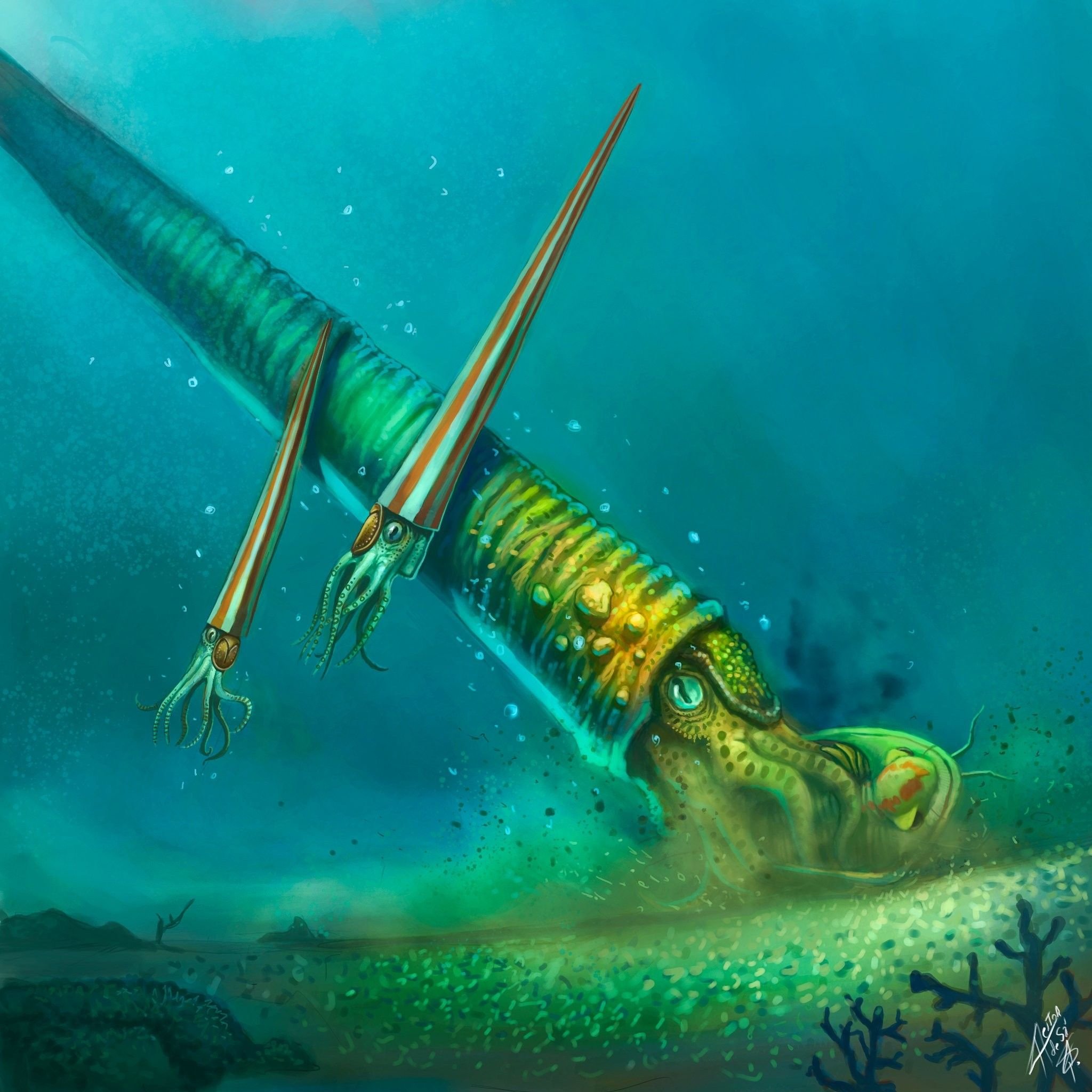Endoceras (Inner Horn)
Basic facts
19 feet (5.7m) length
Middle Ordovician
North America, Europe, Australia
Carnivore
Description
Endoceras, which translates from Ancient Greek as "inner horn," is an extinct genus of sizable cephalopods with straight shells, lending its name to the Nautiloid order Endocerida. This genus thrived during the middle and upper Ordovician period, spanning from 485 to 419 million years ago.
The cross-sectional shape of its mature part is slightly wider than it is tall, but in juvenile stages, it's narrower laterally. The sutures are straight and run horizontally. Endoceras features a substantial siphuncle, situated close to the lower margin, comprised of concave segments. This siphuncle is especially pronounced in juveniles but may adopt a more tubular form in adulthood. The endocones are simple and possess a subcircular cross section, with a narrow tube running through them that might contain diaphragms similar to those observed in the ancestral Ellesmerocerid.
When reaching maturity, fully developed Endoceras are believed to have been ambush predators that patiently positioned themselves on the seabed, strategically adjusting their position as needed for optimal advantage. In contrast, younger individuals, characterized by their compressed cross sections, might have displayed greater mobility, possibly moving around more actively.
